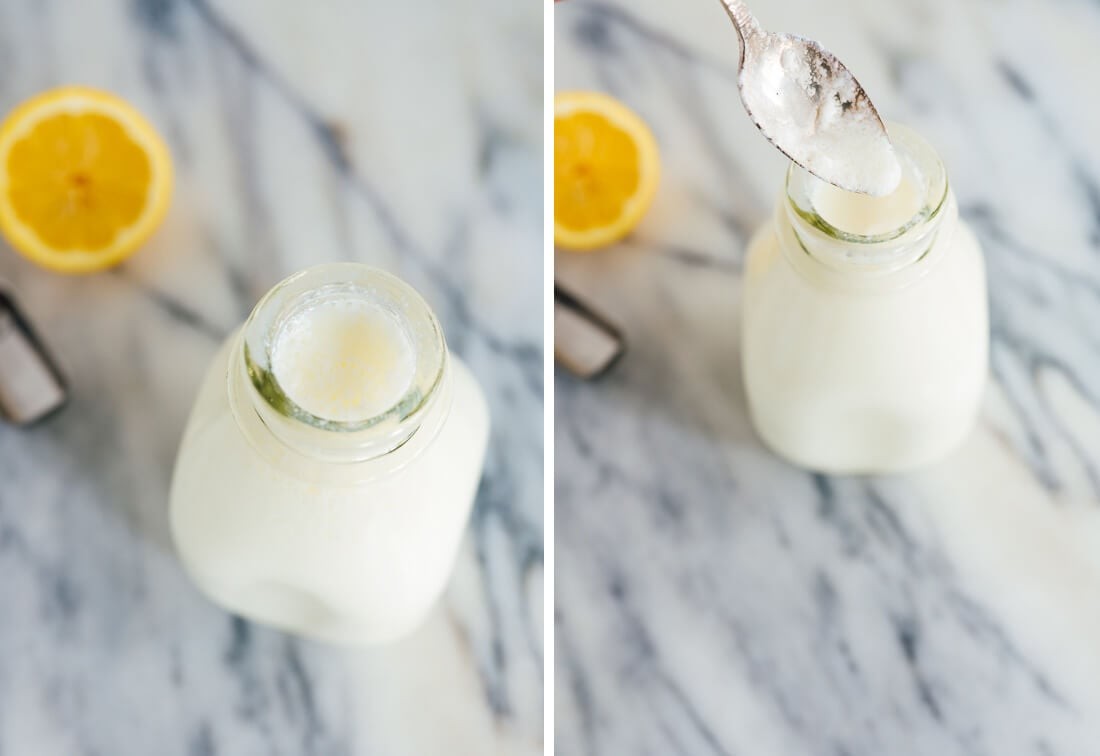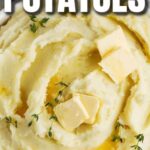Buttermilk is a magical ingredient in the world of baking, renowned for creating incredibly tender, fluffy, and flavorful treats. You’ve likely encountered it in recipes for muffins, pancakes, and even cakes. But what exactly is buttermilk, and how can you make it at home? This guide will walk you through the simple steps and explain why this tangy liquid is a baker’s best-kept secret.
Understanding Buttermilk: More Than Just Butter
Let’s start by demystifying buttermilk. Traditionally, buttermilk was the liquid leftover from churning butter from cream. This “old-fashioned” buttermilk was naturally fermented, giving it a distinctive tangy flavor and slightly thickened texture.
Today, commercially produced buttermilk undergoes a similar process but in a controlled environment. It’s typically made by adding lactic acid bacteria to milk, which then ferment the milk sugars and produce lactic acid. This process gives modern buttermilk its characteristic tang and thicker consistency.
Despite its rich-sounding name, buttermilk is not buttery and is surprisingly low in fat, often comparable to whole milk. Reduced-fat options are also widely available in stores.
The Science Behind Buttermilk in Baking
Why use buttermilk instead of regular milk in your baking recipes? The answer lies in its unique properties. Beyond the subtle tangy flavor it imparts, buttermilk’s acidity plays a crucial role in baking chemistry, particularly when combined with baking soda.
Baking soda is a base, and on its own, it can taste bitter. It requires both an acid and a liquid to activate properly and create the desired leavening effect in baked goods. Buttermilk provides the necessary acidity to react with baking soda, resulting in a lighter, more tender crumb and preventing any bitter aftertaste.
Think of buttermilk as working similarly to other cultured dairy products like sour cream or yogurt. These ingredients also add moisture, tenderness, and a slight tang to baked goods. While they share similarities, buttermilk is thinner in consistency. A general guideline is to use about two-thirds of a cup of buttermilk as a substitute for one cup of sour cream or yogurt.
Homemade Buttermilk: A Quick and Easy Substitute
What if you don’t have buttermilk on hand or prefer a dairy-free option? That’s where acidified buttermilk comes to the rescue! This homemade version mimics the properties of traditional buttermilk by simply adding an acid, such as vinegar or lemon juice, to regular milk.
This method is incredibly convenient and practical. It prevents food waste by eliminating the need to buy a whole carton of buttermilk when you only need a small amount for a recipe. It’s also a fantastic solution for vegan and dairy-free bakers because you can use any type of plant-based milk to create a dairy-free buttermilk alternative.
The 5-Minute Homemade Buttermilk Recipe
Making buttermilk at home is incredibly simple and takes just minutes. Here’s the basic recipe:
Yields: 1 cup
Prep time: 5 minutes
Ingredients:
- 1 tablespoon vinegar (white vinegar, apple cider vinegar, or rice vinegar work well) or lemon juice
- Slightly less than 1 cup milk of your choice (dairy or non-dairy)
Equipment:
- Liquid measuring cup
- Spoon or whisk
Instructions
- Measure the Acid: Pour 1 tablespoon of vinegar or lemon juice into a liquid measuring cup.
- Add Milk: Fill the measuring cup with your chosen milk until it reaches the 1-cup line. You’ll notice it’s a tiny bit less than a full cup to account for the tablespoon of acid already added.
- Stir and Wait: Gently stir the milk and acid together with a spoon or whisk. Let the mixture sit at room temperature for 5 to 10 minutes.
- Observe the Texture: After a few minutes, you’ll see the buttermilk slightly thicken and develop a slightly curdled appearance on the surface. This is a sign that the acidification process is working. Even if the change is subtle, the buttermilk is ready to use.
Using Your Homemade Buttermilk:
Your homemade buttermilk is now ready to use in your favorite recipes! Use it in the same way you would use store-bought buttermilk.
Scaling the Recipe:
Need more or less buttermilk? Here are some common measurements:
- 1/4 cup buttermilk: 3/4 teaspoon vinegar or lemon juice + 1/4 cup milk
- 1/3 cup buttermilk: 1 teaspoon vinegar or lemon juice + 1/3 cup milk
- 1/2 cup buttermilk: 1 1/2 teaspoons vinegar or lemon juice + 1/2 cup milk
- 2/3 cup buttermilk: 2 teaspoons vinegar or lemon juice + 2/3 cup milk
- 3/4 cup buttermilk: Scant 2 1/2 teaspoons vinegar or lemon juice + 3/4 cup milk
Buttermilk Variations and Tips
- Best Vinegar Choices: Opt for clear or light-colored vinegars like white distilled vinegar, apple cider vinegar, rice vinegar, or Champagne vinegar. Their acidity levels are similar and won’t significantly alter the flavor of your baked goods.
- Milk Options are Endless: You can use cow’s milk (any fat percentage), almond milk, soy milk, oat milk, coconut milk, or any other milk alternative. The type of milk won’t drastically affect the buttermilk-making process.
- Vegan Buttermilk: Simply use your favorite plant-based milk to make vegan buttermilk.
- Nut-Free or Soy-Free Buttermilk: Choose a milk alternative that fits your dietary needs.
Unleash Your Baking Potential with Buttermilk
Homemade buttermilk is a simple yet powerful tool for any baker. It’s a convenient substitute, a money-saver, and a versatile ingredient for both dairy and dairy-free recipes. Now that you know How To Make Buttermilk at home, you can confidently bake fluffy pancakes, tender cakes, moist muffins, and so much more!

